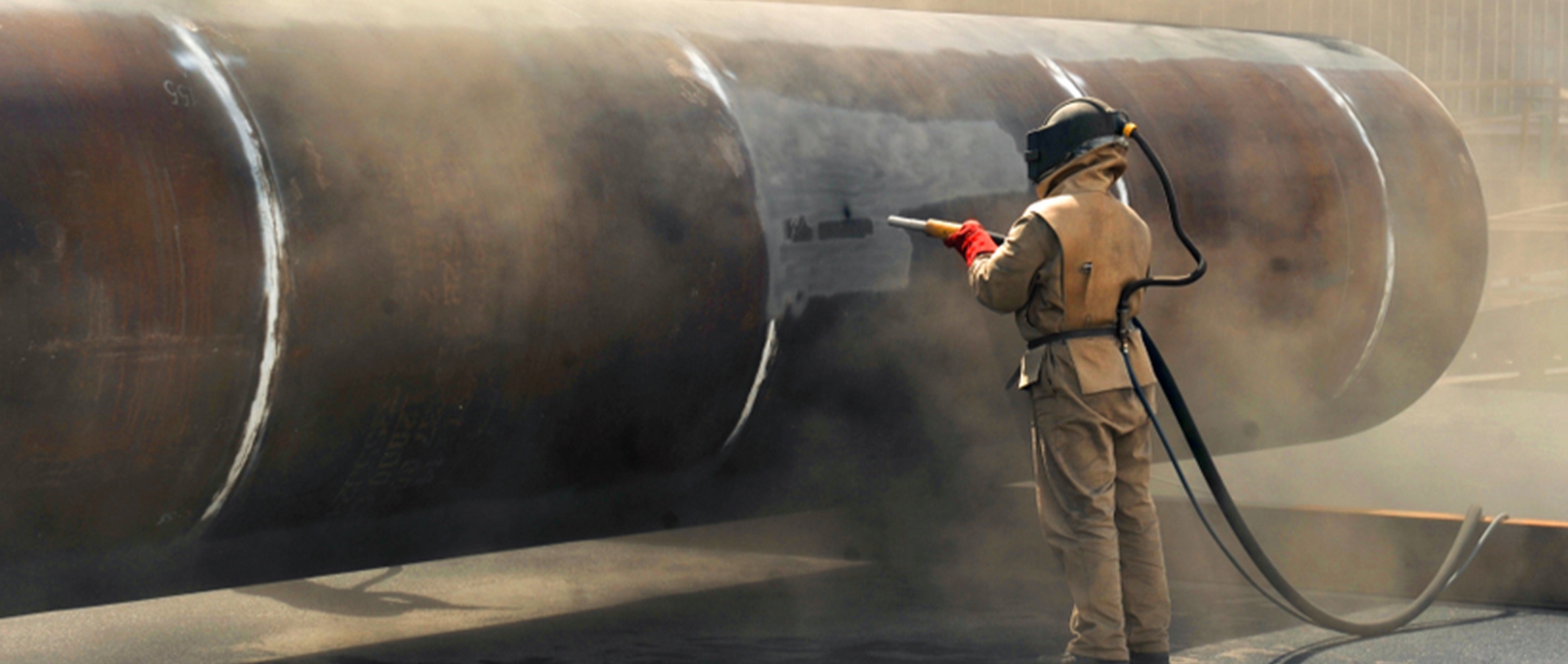Surface Treatment Techniques: Solutions that Extend the Life of Metal Products
In the metal processing and manufacturing sectors, ensuring the durability and longevity of metal products is paramount. Surface treatment techniques play a crucial role in achieving these goals by providing robust protection against corrosion, wear, and environmental damage. From galvanizing and anodizing to powder coating and electroplating, these methods enhance both the performance and aesthetic appeal of metal components. This article explores the variety of metal protection methods available, highlights sustainable surface treatments, and discusses the latest innovations in surface treatment that help extend the life of metal products.
The Importance of Surface Treatment for Metal Products

Surface treatment techniques are vital for enhancing the overall quality of metal products. These techniques provide significant benefits in terms of protection, durability, and aesthetics.
Protection: Surface treatments act as a barrier, shielding metal products from environmental factors that can cause damage. By applying coatings such as galvanizing, anodizing, or powder coating, metal surfaces are protected against moisture, chemicals, and other corrosive elements. This protection is crucial for extending the lifespan of metal products and ensuring their functionality in various environments.
Durability: Enhancing the durability of metal products is another critical effect of surface treatments. Techniques such as electroplating and anodizing increase the hardness and wear resistance of metal surfaces, making them more resilient to mechanical stresses. This increased durability reduces the need for frequent maintenance and replacements, thereby saving costs and resources over time.
Aesthetics: Beyond protection and durability, surface treatments also improve the aesthetic appeal of metal products. Coatings can provide a smooth, attractive finish in a wide range of colors and textures. This aesthetic enhancement is important for consumer-facing products and applications where visual appeal is a key consideration. Techniques like powder coating not only offer excellent protection but also deliver a high-quality, customizable finish that meets specific design requirements.
The Role of Surface Treatment in Preventing Issues Like Corrosion, Wear, and Tear
Surface treatment techniques are essential for preventing common issues such as corrosion, wear, and tear, which can significantly degrade the performance and lifespan of metal products.
Corrosion Prevention: Corrosion is one of the most significant threats to metal products, leading to structural weaknesses and failures. Galvanizing, which involves coating metal with a layer of zinc, provides sacrificial protection that prevents rust and corrosion. Similarly, anodizing creates a thick oxide layer on aluminum surfaces, enhancing their resistance to corrosion and extending their useful life.
Wear and Tear Reduction: Metal products are often subjected to mechanical stresses that can cause wear and tear over time. Surface treatments such as electroplating add a thin layer of a harder metal to the surface, significantly increasing wear resistance. This treatment is particularly beneficial for components that experience high friction and frequent use, ensuring they remain functional and effective for longer periods.
Enhanced Resistance: Treatments like powder coating not only improve the appearance of metal products but also enhance their resistance to environmental and mechanical damage. The cured powder coating forms a hard, protective layer that resists chipping, scratching, and fading, maintaining the product’s integrity and appearance even under challenging conditions.
In conclusion, the importance of surface treatment techniques in the metal processing and manufacturing sectors cannot be overstated. By providing essential protection, enhancing durability, and improving aesthetics, these treatments play a critical role in extending the life of metal products. They prevent issues like corrosion, wear, and tear, ensuring that metal components perform reliably and maintain their value over time. Through the application of advanced and sustainable surface treatments, companies can achieve higher quality standards and deliver superior products to the market.
Basic Surface Treatment Techniques and Applications
Galvanizing is a widely-used surface treatment technique that involves coating metal, typically steel or iron, with a layer of zinc. This process provides robust protection against corrosion by acting as a physical barrier between the metal and environmental elements. There are two primary methods of galvanizing:
• Hot-Dip Galvanizing: The metal is submerged in a bath of molten zinc, creating a thick, durable coating. This method is particularly effective for outdoor applications and industrial structures, such as bridges, poles, and steel frames, where superior corrosion resistance is essential.
• Electro-Galvanizing: This method involves using an electric current to apply a thinner layer of zinc. Electro-galvanizing offers a smoother finish and is commonly used for products requiring a clean appearance and moderate corrosion protection, such as automotive parts and household appliances.
Anodizing: An Electrochemical Process Used for Protecting and Coloring Aluminum
Anodizing is an electrochemical process that enhances the natural oxide layer on the surface of aluminum products, increasing their resistance to corrosion and wear. This technique not only protects but also allows for the addition of vibrant colors through dyeing, making it both functional and decorative. The anodizing process involves several steps:
• Cleaning: The aluminum surface is thoroughly cleaned to remove any contaminants.
• Anodizing Bath: The aluminum is placed in an electrolytic solution, and an electric current is passed through it, forming a thick oxide layer on the surface.
• Coloring (Optional): The porous oxide layer can be dyed in a variety of colors before sealing.
• Sealing: The oxide layer is sealed to enhance its durability and appearance.
Applications of anodizing include architectural components, consumer electronics, automotive parts, and kitchenware. This process is especially valued for products that require a durable, attractive finish that can withstand harsh environments.
Powder Coating: Applying Electrostatic Powder Paint to Metal Surfaces and Curing It with Heat
Powder coating is a dry finishing process that involves applying a free-flowing, electrostatic powder paint to metal surfaces. The coated metal is then cured under heat, forming a hard, durable finish. The powder used in this process can be composed of various materials, including polyester, epoxy, and polyurethane. The steps in powder coating include:
• Surface Preparation: The metal surface is cleaned and prepared to ensure good adhesion.
• Application: The electrostatic powder is sprayed onto the metal surface using a spray gun. The charged powder particles adhere to the grounded metal.
• Curing: The coated metal is heated in an oven, causing the powder to melt and form a continuous, protective layer.
In conclusion, understanding and utilizing basic surface treatment techniques like galvanizing, anodizing, and powder coating are essential for enhancing the protection, durability, and aesthetics of metal products. Each method offers unique benefits and is suitable for specific applications, ensuring that metal components perform reliably and maintain their quality over time. By implementing these techniques, companies in the metal processing and manufacturing sectors can produce high-quality, long-lasting products that meet diverse industry needs.
Enhancing Surface Quality Through Mechanical Methods Such as Sanding, Brushing, and Polishing
Mechanical surface treatments are essential techniques used to enhance the surface quality of metal products. These methods involve physically altering the surface through various abrasive processes, each serving specific purposes in improving both aesthetics and functionality.
Sanding: Sanding is a process that involves using abrasive materials to remove surface imperfections, such as rust, paint, or burrs. It creates a smooth, even surface that is ideal for further finishing treatments, such as painting or coating. Sanding is commonly used in the preparation stage to ensure that the surface is clean and free of contaminants, allowing for better adhesion of subsequent treatments.
Brushing: Brushing involves using wire or nylon brushes to clean and texture the metal surface. This technique is particularly useful for removing oxides, creating a uniform surface texture, and enhancing the appearance of stainless steel and aluminum. Brushing can produce a satin or matte finish, which is often preferred for decorative applications and where a non-reflective surface is desired.
Polishing: Polishing is a finishing process that uses finer abrasives to achieve a high-gloss, reflective surface. It involves multiple stages, starting with coarse abrasives and progressing to finer ones. Polishing enhances the visual appeal of metal products and is commonly used for applications where a mirror-like finish is required, such as in automotive parts, kitchen appliances, and architectural elements.
Chemical Surface Treatments
Chemical surface treatments are essential for preparing and protecting metal surfaces.
Acid Baths: Also known as pickling, acid baths use solutions like hydrochloric or sulfuric acid to remove rust and scale from metal surfaces, especially steel and iron. This process cleans the metal and improves coating adhesion.
Alkali Baths: These baths use sodium hydroxide to clean and degrease metal surfaces, removing oils and organic residues. Alkali cleaning is often the first step before other treatments.
Methods to Extend Life and Protection of Metal Surfaces
Phosphating: Applies a phosphate coating to enhance corrosion resistance and paint adhesion. Common in automotive and industrial uses.
Chromating: Adds a chromate layer to metals like aluminum and zinc, improving corrosion resistance and preparing surfaces for painting. Used in aerospace and electronics.
Passivation: Uses nitric or citric acid to form a protective oxide layer on stainless steel, enhancing corrosion resistance. Essential for medical devices and food processing equipment.
Electroplating: Deposits a thin layer of metal (like nickel or zinc) onto surfaces to improve corrosion and wear resistance. Common in automotive and decorative applications.
In summary, chemical surface treatments like acid and alkali baths, phosphating, chromating, passivation, and electroplating are crucial for extending the lifespan and enhancing the protection of metal products. These treatments ensure metals are durable, corrosion-resistant, and ready for further processing.
Industrial and Commercial Advantages of Surface Treatment
Surface treatments significantly enhance the quality of metal products by providing superior protection against corrosion, wear, and environmental damage. High-quality finishes improve the durability and aesthetic appeal of products, leading to greater customer satisfaction. For example, anodizing aluminum components not only enhances their appearance with a range of color options but also increases their resistance to corrosion and wear. This results in products that not only look better but also perform reliably over a longer period, meeting customer expectations for longevity and durability.
Reduction in Maintenance and Repair Costs
Surface treatments help reduce the need for frequent maintenance and repairs by providing a robust protective layer that guards against damage. Techniques like galvanizing and powder coating create durable surfaces that resist rust, scratches, and other forms of wear and tear. This longevity translates into lower maintenance costs for end-users, as treated metal components require less frequent servicing and are less likely to fail prematurely. For manufacturers and industrial users, this means significant cost savings over the product’s lifecycle, enhancing overall profitability and operational efficiency.
By improving product quality and reducing maintenance needs, surface treatment techniques offer substantial industrial and commercial advantages, ensuring that metal products meet high standards of performance and reliability.
Sustainable Surface Treatment Solutions
As the demand for eco-friendly manufacturing practices grows, sustainable surface treatment solutions have become increasingly important. Techniques such as powder coating and water-based paints offer significant environmental benefits. Powder coating is a dry finishing process that produces minimal waste and contains no volatile organic compounds (VOCs), making it an excellent choice for reducing harmful emissions. Similarly, water-based paints replace traditional solvent-based paints, drastically lowering VOC emissions and minimizing environmental impact. These methods help companies meet regulatory standards and reduce their carbon footprint, contributing to a healthier environment.
Technologies That Save Energy and Resources
Innovative surface treatment technologies are designed to save energy and resources, enhancing sustainability in manufacturing. Electroplating advancements, for instance, focus on optimizing energy consumption and reducing waste. Modern electroplating systems use closed-loop processes to recycle plating solutions and minimize water usage, making the process more resource-efficient. Additionally, anodizing processes have been improved to lower energy requirements by using more efficient power supplies and reducing processing times. These energy-saving technologies not only cut operational costs but also help manufacturers adhere to stringent environmental regulations, promoting long-term sustainability in the industry.
By adopting environmentally friendly surface treatment methods and leveraging technologies that save energy and resources, companies can significantly enhance their sustainability efforts. These approaches ensure that metal products are produced in an eco-conscious manner, benefiting both the environment and the bottom line.
Selection and Implementation of Surface Treatment Techniques
Selecting the appropriate surface treatment technique is crucial for ensuring the longevity and performance of metal products. The choice depends on the type of metal and its specific application requirements.
Steel and Iron: For steel and iron, galvanizing is an ideal choice. It involves coating the metal with a layer of zinc to protect against corrosion. This technique is especially effective for outdoor applications, such as construction materials and automotive parts.
Aluminum: Anodizing is a preferred method for aluminum products. This electrochemical process enhances corrosion resistance and allows for coloring the metal, making it suitable for decorative and functional applications like consumer electronics and architectural components.
Various Metals: Powder coating is versatile and can be used on a wide range of metals, including steel, aluminum, and brass. It provides a durable, attractive finish that resists chipping, scratching, and fading, ideal for outdoor furniture, appliances, and automotive parts.
By understanding the properties of different metals and their intended uses, manufacturers can select the most effective surface treatment techniques to ensure optimal performance and durability.
Quality Control and Standardization: Effective Management of Surface Treatment Processes
Ensuring the quality and consistency of surface treatment processes is essential for achieving reliable and high-performance metal products. Implementing rigorous quality control and standardization measures helps manage and optimize these processes.
• Standard Operating Procedures (SOPs): Establishing clear SOPs for each surface treatment technique ensures that every step, from surface preparation to final inspection, is performed consistently. This reduces variability and enhances the reliability of the treatment.
• Regular Inspections and Testing: Conducting regular inspections and testing of treated surfaces helps detect any defects or inconsistencies early. Techniques like adhesion tests, thickness measurements, and corrosion resistance tests are crucial for maintaining high standards.
• Certifications and Compliance: Adhering to industry standards and obtaining relevant certifications (such as ISO standards) ensure that surface treatments meet the required quality benchmarks. Compliance with these standards fosters trust among customers and stakeholders.
• Continuous Training and Education: Keeping staff updated with the latest techniques and technologies in surface treatment is vital. Continuous training ensures that technicians are proficient in implementing and managing advanced treatment processes.
By focusing on quality control and standardization, manufacturers can effectively manage surface treatment processes, ensuring that metal products meet the highest standards of performance and durability. This systematic approach enhances product quality, customer satisfaction, and overall operational efficiency.
Conclusion: Surface Treatment Strategies for Longevity in Metal Products
Innovative surface treatment strategies are crucial for extending the life of metal products. By selecting the best techniques for protecting metal surfaces, manufacturers can ensure their products are durable, reliable, and visually appealing.
Embracing innovation in surface treatment has led to advanced methods such as galvanizing, anodizing, and powder coating, which offer robust protection against corrosion, wear, and environmental damage. These techniques are essential for extending the life of metal products through surface treatment, ensuring that they maintain their integrity and performance over time.
Eco-friendly surface treatment solutions have become increasingly important as environmental concerns rise. Techniques like powder coating and water-based paints reduce harmful emissions and waste, promoting sustainability in manufacturing processes. These eco-friendly methods not only meet regulatory standards but also appeal to environmentally conscious consumers.
For industrial applications, implementing comprehensive surface treatment strategies is key to achieving long-term durability and functionality. Quality control measures, standard operating procedures, and continuous training ensure that surface treatments are applied consistently and effectively. This systematic approach enhances product quality and customer satisfaction.




